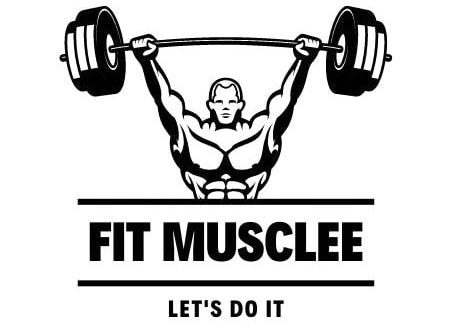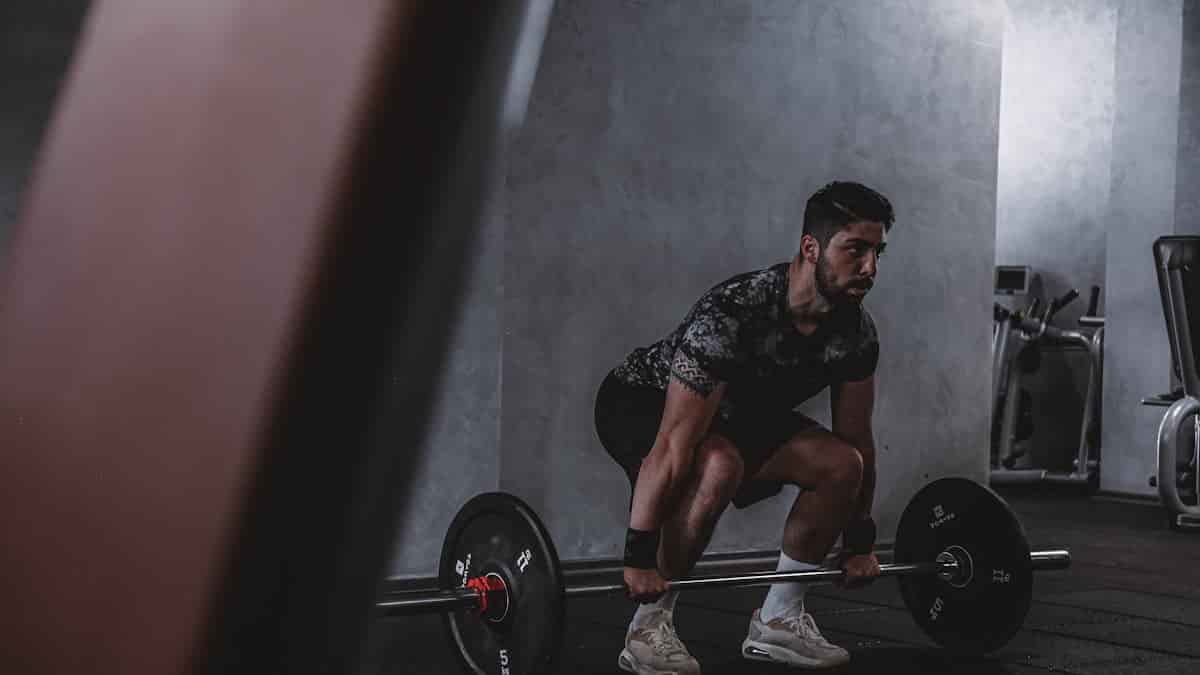Here is your complete guide to squat deadlift same day.
Introduction to Squat Deadlift Same Day
When it comes to strength training, few exercises are as effective and essential as squats and deadlifts. These compound movements engage multiple muscle groups, making them staples in any fitness regimen. But what if you could combine these powerful lifts into a single workout session? This article explores the concept of performing squat deadlift same day, examining its benefits, risks, and how to structure your workouts effectively.
In this comprehensive guide, we’ll delve into the mechanics of squats and deadlifts, discuss the advantages of training both on the same day, address potential risks, and provide a sample workout plan. Whether you’re a seasoned lifter or a beginner looking to optimize your training routine, understanding how to effectively integrate these lifts can elevate your performance and results.
Understanding Squat Deadlift Same Day
Squats are a fundamental exercise that primarily targets the lower body. They can be performed in various forms, including:
- Back Squat: The barbell rests on your upper back.
- Front Squat: The barbell is held at shoulder height in front of you.
- Goblet Squat: A dumbbell or kettlebell is held close to your chest.
Muscles Worked
Squats primarily engage the following muscle groups:
- Quadriceps: The front thigh muscles that extend the knee.
- Hamstrings: The muscles at the back of your thigh that flex the knee.
- Glutes: The muscles in your buttocks responsible for hip extension.
- Lower Back: Stabilizes your body during the movement.
What are Deadlifts?
Deadlifts are another cornerstone of strength training, focusing primarily on the posterior chain. Types of deadlifts include:
- Conventional Deadlift: Feet shoulder-width apart with a grip outside the knees.
- Sumo Deadlift: A wider stance with hands inside the knees.
Muscles Worked
Deadlifts activate several key muscle groups:
- Hamstrings: Engaged during the lift as you extend your hips.
- Glutes: Critical for hip extension at the top of the lift.
- Lower Back: Provides stability throughout the movement.
- Trapezius: Engaged to keep your shoulders back and down.
Similarities and Differences of Squat Deadlift Same Day
Understanding how squats and deadlifts compare can help you appreciate their unique benefits. Here’s a table summarizing their similarities and differences:
| Exercise | Primary Muscles | Secondary Muscles | Key Benefits |
|---|---|---|---|
| Squats | Quads, Glutes | Hamstrings | Builds leg strength, improves mobility |
| Deadlifts | Hamstrings, Glutes | Lower Back | Enhances overall strength, core stability |
Benefits of Squat Deadlift Same Day
Combining squats and deadlifts in a single workout offers several advantages:
1. Time Efficiency
In today’s fast-paced world, time is often a constraint for many fitness enthusiasts. By incorporating both lifts into one session, you can maximize your workout efficiency:
- Shorter Workout Duration: Completing both exercises in one session saves time compared to splitting them into separate days.
- Quick Transition Between Exercises: With proper planning, you can move efficiently from squats to deadlifts without losing momentum.
2. Enhanced Muscle Activation
Performing both lifts together can lead to greater muscle engagement:
- Synergistic Effects: The combination of squats and deadlifts activates multiple muscle groups simultaneously, promoting overall strength development.
- Increased Hormonal Response: Engaging large muscle groups can enhance testosterone and growth hormone release, aiding muscle growth.
3. Improved Technique
Training both lifts on the same day allows for focused practice:
- Skill Development: Regularly performing both exercises helps refine technique and improve overall lifting mechanics.
- Feedback Loop: You can learn from each lift; for example, improving your squat may enhance your deadlift form due to better hip mobility.
Risks and Considerations of Squat Deadlift Same Day
While there are numerous benefits to performing squats and deadlifts on the same day, it’s essential to consider potential risks.
1. Fatigue Management
One of the primary concerns when combining these lifts is fatigue:
- Muscle Fatigue: Performing both exercises in one session may lead to fatigue that impacts performance.
- Decreased Performance: If not managed properly, fatigue from squatting may impair your ability to lift effectively during deadlifts.
2. Recovery Needs
Recovery is crucial when engaging in intense workouts:
- Increased Recovery Time: Combining both lifts may necessitate longer recovery periods between sessions.
- Listening to Your Body: Pay attention to signs of overtraining or excessive fatigue.
3. Injury Risks
Improper form or overexertion can lead to injuries:
- Form Deterioration: As fatigue sets in, maintaining proper form becomes challenging, increasing injury risk.
- Overtraining Symptoms: Be aware of signs such as persistent soreness or decreased performance.
Programming Squat Deadlift Same Day
To reap the benefits while minimizing risks, it’s essential to structure your workouts effectively.
Sample Workout Structure of Squat Deadlift Same Day
Here’s a sample workout plan for integrating squats and deadlifts into one session:
Sample Workout Plan
| Exercise Type | Sets | Reps | Notes |
|---|---|---|---|
| Warm-Up | – | 10 mins | Dynamic stretches |
| Back Squat | 3 | 8-10 | Use 75% of max weight |
| Rest | – | 3 mins | Hydrate and recover |
| Conventional Deadlift | 3 | 6-8 | Use 75% of max weight |
| Cool Down | – | 10 mins | Static stretching |
Frequency Recommendations
To ensure optimal recovery while still benefiting from this combined approach:
- Frequency: Aim for this combined workout once or twice per week.
- Alternate Focus Days: Consider alternating between heavy squat days and heavy deadlift days if doing both feels taxing.
Common Mistakes to Avoid When Squat Deadlift Same Day
When incorporating both squats and deadlifts into the same workout, it’s crucial to be aware of common mistakes that can lead to suboptimal performance or even injury. Here are some key pitfalls to avoid.
1. Ignoring Fatigue Management
One of the most significant mistakes lifters make is not properly managing fatigue levels. Both squats and deadlifts are demanding exercises that target large muscle groups, leading to substantial fatigue.
- Consequences of Ignoring Fatigue:
- Increased risk of injury due to compromised form.
- Reduced performance in subsequent exercises.
- Central nervous system (CNS) fatigue, which can manifest as poor coordination and flu-like symptoms.
To combat this, consider the following strategies:
- Prioritize Recovery: Allow adequate rest between sets (2-5 minutes) to recover before moving on to the next lift.
- Monitor Your Body: Pay attention to how you feel during your workout. If you notice excessive fatigue, adjust your weights or volume accordingly.
2. Performing Maximal Efforts for Both Lifts
Attempting to lift maximal weights for both squats and deadlifts in the same session is generally not advisable, especially for non-professional lifters.
- Why This is a Mistake:
- Heavy lifting for both exercises can lead to severe fatigue, compromising your ability to perform either lift effectively.
- The risk of injury increases significantly when lifting heavy weights while fatigued.
Instead, consider these alternatives:
- Alternate Intensity: Focus on one lift as the primary lift of the day while using lighter weights for the other. For example, perform heavy squats followed by lighter deadlifts or vice versa.
- Split Sessions: If you’re determined to lift heavy for both, consider splitting them into two sessions on the same day (e.g., squats in the morning and deadlifts in the afternoon).
3. Neglecting Proper Warm-Up
A common oversight is failing to adequately warm up before heavy lifts. Both squats and deadlifts require a good range of motion and muscle activation.
- Risks of Skipping Warm-Up:
- Increased risk of strains or injuries due to cold muscles.
- Poor performance due to lack of muscle readiness.
To ensure a proper warm-up:
- Dynamic Stretching: Engage in dynamic stretches focusing on the hips, hamstrings, quads, and lower back.
- Progressive Loading: Start with lighter weights and gradually increase to your working sets.
4. Overlooking Form and Technique
As fatigue sets in during a combined squat and deadlift workout, maintaining proper form can become challenging.
- Consequences of Poor Form:
- Increased risk of injury, particularly in the lower back and knees.
- Decreased effectiveness of the lifts due to improper movement patterns.
To maintain good form:
- Focus on Technique: Prioritize form over weight. If you feel your technique slipping, reduce the weight or take additional rest.
- Use Video Feedback: If possible, record yourself or work with a coach to identify any form issues during your lifts.
5. Not Adjusting Volume Appropriately
Many lifters make the mistake of using their usual volume when combining squats and deadlifts on the same day without considering their increased fatigue levels.
- Impacts of Excessive Volume:
- Overtraining can occur, leading to prolonged recovery times and diminished performance.
- Increased likelihood of injury due to muscle overuse.
To manage volume effectively:
- Reduce Sets/Reps: Consider lowering your usual sets or reps for both lifts when performed together.
- Listen to Your Body: Adjust your training based on how you feel; if you’re fatigued after squats, reduce the volume for deadlifts accordingly.
Read Also: Zercher Squat vs Back Squat.
FAQs about Squat Deadlift Same Day
Here are some frequently asked questions regarding performing squat deadlift same day:
Can beginners perform squats and deadlifts on the same day?
Yes! However, beginners should focus on mastering form before increasing weight or volume. Start with lighter weights and gradually increase as confidence builds.
Read Also: Reverse Hack Squat Alternative.
What should I prioritize—squats or deadlifts?
This depends on individual goals:
- If building leg strength is your priority, start with squats.
- If developing overall strength is key, consider starting with deadlifts since they engage more muscle groups.
Read Also: Single Leg Press Alternative.
How can I prevent fatigue during this workout?
To manage fatigue:
- Ensure adequate rest between sets (3–5 minutes).
- Stay hydrated throughout your workout.
- Listen to your body; if you feel overly fatigued, consider reducing weight or volume.
Read Also: High to Low Cable Flyes Alternative.
Conclusion
Incorporating squat deadlift same day into your training regimen can be an effective way to maximize efficiency while enhancing strength gains. By understanding how these two powerful lifts work together—and being mindful of potential risks—you can create a balanced approach that promotes growth without compromising safety.
Read Also: Foods That Increases Hemoglobin.
As you experiment with this training method, remember to prioritize proper form and recovery needs. With dedication and consistency, you’ll be well on your way to achieving impressive results in your strength training journey!
Read Also: Alternatives to Hip Thrusts.
References and Resources Used in This Article:
- A Comparison Between the Squat and the Deadlift for Lower Body Strength
- A Study of Effect of the Compound Physical Activity Therapy on Muscular Strength
- No Time to Lift? Designing Time-Efficient Training Programs for Strength Training
- Should You Squat or Deadlift First? (PhD Explains)
- A Comparison of Affective Responses Between Time Efficient Training Methods
- Compound Exercises – Physiopedia
- No Time to Lift? Designing Time-Efficient Training Programs for Strength Training
- What are compound exercises and why are they good for you?

